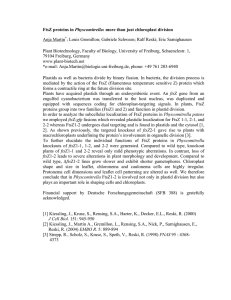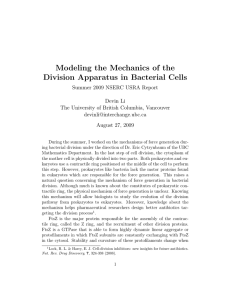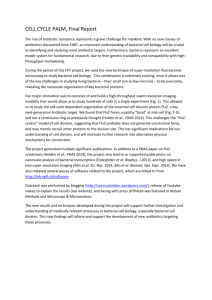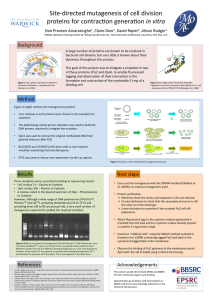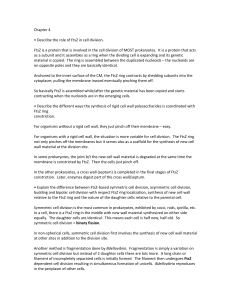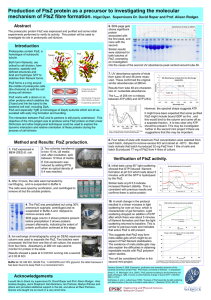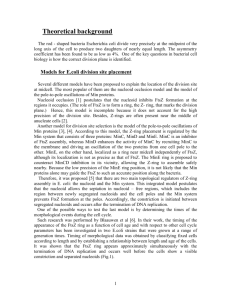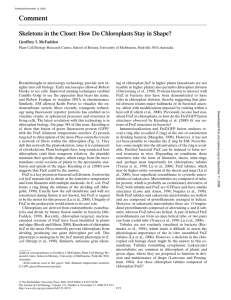to see - Mahidol University
advertisement
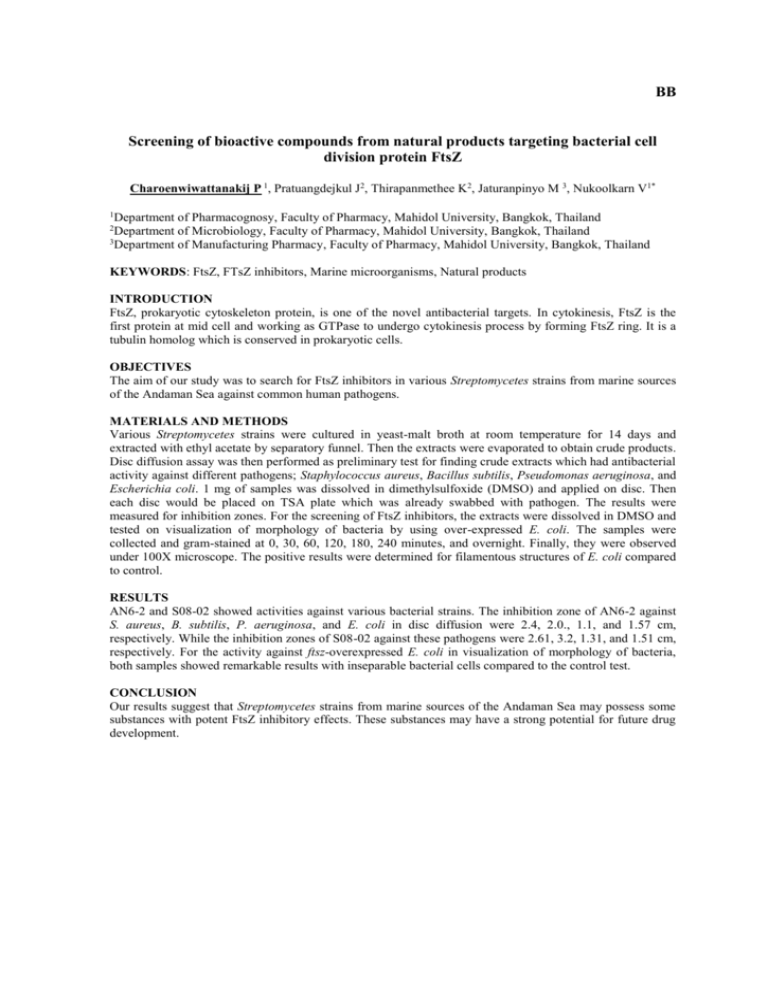
BB Screening of bioactive compounds from natural products targeting bacterial cell division protein FtsZ Charoenwiwattanakij P 1, Pratuangdejkul J2, Thirapanmethee K2, Jaturanpinyo M 3, Nukoolkarn V1* 1 Department of Pharmacognosy, Faculty of Pharmacy, Mahidol University, Bangkok, Thailand Department of Microbiology, Faculty of Pharmacy, Mahidol University, Bangkok, Thailand 3 Department of Manufacturing Pharmacy, Faculty of Pharmacy, Mahidol University, Bangkok, Thailand 2 KEYWORDS: FtsZ, FTsZ inhibitors, Marine microorganisms, Natural products INTRODUCTION FtsZ, prokaryotic cytoskeleton protein, is one of the novel antibacterial targets. In cytokinesis, FtsZ is the first protein at mid cell and working as GTPase to undergo cytokinesis process by forming FtsZ ring. It is a tubulin homolog which is conserved in prokaryotic cells. OBJECTIVES The aim of our study was to search for FtsZ inhibitors in various Streptomycetes strains from marine sources of the Andaman Sea against common human pathogens. MATERIALS AND METHODS Various Streptomycetes strains were cultured in yeast-malt broth at room temperature for 14 days and extracted with ethyl acetate by separatory funnel. Then the extracts were evaporated to obtain crude products. Disc diffusion assay was then performed as preliminary test for finding crude extracts which had antibacterial activity against different pathogens; Staphylococcus aureus, Bacillus subtilis, Pseudomonas aeruginosa, and Escherichia coli. 1 mg of samples was dissolved in dimethylsulfoxide (DMSO) and applied on disc. Then each disc would be placed on TSA plate which was already swabbed with pathogen. The results were measured for inhibition zones. For the screening of FtsZ inhibitors, the extracts were dissolved in DMSO and tested on visualization of morphology of bacteria by using over-expressed E. coli. The samples were collected and gram-stained at 0, 30, 60, 120, 180, 240 minutes, and overnight. Finally, they were observed under 100X microscope. The positive results were determined for filamentous structures of E. coli compared to control. RESULTS AN6-2 and S08-02 showed activities against various bacterial strains. The inhibition zone of AN6-2 against S. aureus, B. subtilis, P. aeruginosa, and E. coli in disc diffusion were 2.4, 2.0., 1.1, and 1.57 cm, respectively. While the inhibition zones of S08-02 against these pathogens were 2.61, 3.2, 1.31, and 1.51 cm, respectively. For the activity against ftsz-overexpressed E. coli in visualization of morphology of bacteria, both samples showed remarkable results with inseparable bacterial cells compared to the control test. CONCLUSION Our results suggest that Streptomycetes strains from marine sources of the Andaman Sea may possess some substances with potent FtsZ inhibitory effects. These substances may have a strong potential for future drug development.
